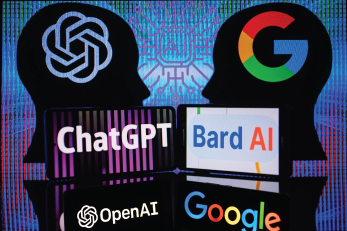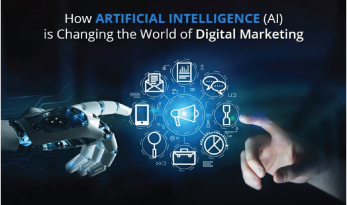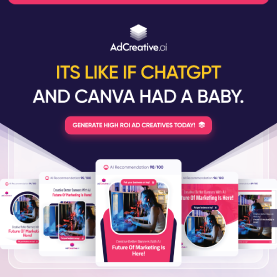Crafting an Effective AI Marketing Strategy: Where Innovation Meets Impact
Let’s get real for a second—AI sounds like a magic wand, right? Wave it over your marketing, and boom, instant results. Except… that’s not quite how it works. Trust me, I’ve been there. I remember when I first dipped my toes into AI-driven marketing tools. I was so hyped about automating everything—email campaigns, content suggestions, even analytics. But instead of driving results, I ended up automating chaos. It was like giving a five-year-old the keys to a Ferrari. Fast forward a few lessons (and bruised egos), and I’ve got a strategy that actually works—and I’m here to spill the beans.
1. Start Small, Scale Smart
Here’s the thing about AI—it’s powerful, but it’s not a plug-and-play solution. You’ve got to start with one clear goal. For me, it was understanding my audience better. I began using an AI tool to analyze user behavior on my website. Within weeks, I noticed a pattern: visitors were spending more time on blogs that had specific case studies. That insight helped me double down on that content format—and traffic shot up by 35% in three months. Lesson learned: Focus on one area where AI can make a measurable impact, test it, then expand.
2. Data is the Fuel—But Clean Data is King
AI is only as good as the data you feed it. Think of it as cooking—you wouldn’t use stale ingredients, right? I made the rookie mistake of feeding my AI tool data from outdated customer profiles. The result? Personalization campaigns that felt like spam. Once I cleaned up my data—removing inactive users and updating preferences—the difference was night and day. Open rates went from 12% to 28%. Moral of the story: Invest time in organizing and updating your data before you even think about AI.
3. Blend Automation with Human Touch
AI can help you scale, but it can’t replicate authenticity. One of my biggest wins came from using AI to draft email subject lines—but I always tweaked them with a personal touch. For example, an AI-generated subject might say, “Boost Your Sales Today.” I’d tweak it to something like, “Boost Your Sales—Here’s What’s Working for Others.” That small adjustment added warmth, and click-through rates jumped by 15%. Always remember: AI gives you the framework, but you bring the soul.
4. Measure, Learn, and Iterate
Here’s a harsh truth: Your first AI strategy won’t be perfect. And that’s okay. When I launched my first chatbot, it was a trainwreck—users kept dropping off mid-conversation. Instead of scrapping it, I dove into the analytics, figured out where people were getting stuck, and restructured the flow. After a few tweaks, engagement increased by 50%. The takeaway? Use AI’s insights to refine your strategy over time. It’s a marathon, not a sprint.
So, what’s the deal with AI marketing? If you’ve ever browsed Netflix and thought, How does it always know what I want to watch? or marveled at Amazon’s eerily accurate product recommendations, then congratulations—you’ve already experienced AI marketing in action. At its core, AI marketing uses artificial intelligence to supercharge your marketing game. It’s all about automating repetitive tasks, analyzing boatloads of data, and, most importantly, creating a customer experience that feels personal and relevant.
I’ll be honest, though—when I first heard about AI marketing, it felt overwhelming. Machine learning? Predictive analytics? It all sounded more like rocket science than something I could use to grow my business. But here’s the thing: You don’t need to be a tech genius to benefit from AI. You just need to start small and focus on the basics. For me, that meant using a chatbot to handle simple customer inquiries. Within weeks, my email inbox went from chaos to manageable, freeing me up to focus on strategy.
Why AI Marketing is a Game-Changer
The beauty of AI is in its ability to make decisions faster—and often better—than humans. Imagine sifting through thousands of customer interactions to find patterns. Sounds exhausting, right? AI does it in minutes. For example, one of my early wins was using an AI-powered tool to analyze website traffic. It pinpointed that most of my users came from Instagram, so I shifted my ad spend there. The result? A 40% boost in conversions within two months.
The secret sauce is personalization. AI can help you craft experiences that feel like one-on-one conversations. Take Starbucks, for instance. Their AI analyzes customer behavior to send tailored email offers. The result? Higher engagement and a loyal customer base that keeps coming back.
Getting Started with AI Marketing
If you’re feeling intimidated, don’t sweat it. Start with one tool that solves a specific problem. Maybe it’s a chatbot to handle FAQs or an AI-powered email platform to personalize your campaigns. Experiment, measure, and refine. Remember, even the tech giants started somewhere.
At the end of the day, AI marketing isn’t about replacing humans—it’s about amplifying what we do best: connecting with people. So ask yourself, what’s one area of your business where AI could save you time or boost results? Dive in, and don’t be afraid to learn as you go.
The Building Blocks of an AI Marketing Strategy
When I first started working with AI marketing, I’ll admit—I was tempted to jump straight into fancy tools and flashy software. But here’s the truth: without a solid foundation, even the best AI tools won’t deliver results. It’s like trying to build a skyscraper on quicksand. So, let’s break this down into the key building blocks that’ll set you up for success.
1. Identify Goals and Objectives
Before you even touch an AI tool, get crystal clear on what you’re trying to achieve. Are you aiming to increase email open rates? Drive more conversions? Improve customer service response times? I made the mistake early on of chasing every shiny feature AI offered, but without clear objectives, I was just spinning my wheels. For example, when I decided to focus on improving customer retention, I set a specific goal: increase repeat purchases by 20% in six months. That clarity gave me direction and helped me choose the right tools to get there.
2. Data is King
Here’s the thing about AI—it’s only as good as the data you feed it. I learned this the hard way when I tried to launch an AI-powered email campaign using outdated customer data. The result? Low engagement and a bunch of unsubscribes. Ouch. Now, I prioritize collecting and cleaning high-quality data. Start with the basics: purchase history, website behavior, and social media interactions. Even small insights, like knowing which blog posts drive the most traffic, can help you tailor campaigns that hit home.
3. Pick the Right AI Tools for the Job
The AI landscape can feel like a jungle, so focus on tools that solve specific problems for your business. If you’re drowning in customer inquiries, a chatbot like ChatGPT can automate responses and save you hours. Predictive analytics tools can help you forecast trends and stock inventory more efficiently—this was a game-changer for my e-commerce business. And if you’re in the content game, recommendation systems like those used by Netflix or Amazon can keep your audience engaged by serving up personalized suggestions.
The key here? Don’t try to do it all at once. Start with one tool, get comfortable, and expand from there. AI is like a Swiss Army knife—it’s versatile, but it’s up to you to decide which blade to use for the task at hand. With a clear strategy and the right tools, you’ll be well on your way to creating campaigns that wow your audience and drive measurable results.
Steps to Create an Impactful AI Marketing Strategy
If I’ve learned one thing about building a killer AI marketing strategy, it’s that success isn’t about throwing money at fancy tools—it’s about having a plan. A clear, step-by-step process will save you time, money, and a whole lot of frustration. Here’s how you can make it happen, based on lessons I’ve learned (sometimes the hard way).
Step 1: Analyze Your Audience
Here’s the deal—if you don’t understand your audience, no AI tool is going to save you. I remember the first time I used AI to segment my email subscribers. I thought I knew my audience, but when the data came back, it turned out I was dead wrong. The AI revealed a core group of high-value customers I wasn’t even targeting. By tailoring my campaigns to this segment, my click-through rates doubled in a month. Use tools like Google Analytics or a customer data platform (CDP) to dig deep into behaviors, preferences, and purchase patterns. Trust me, the insights are worth the effort.
Step 2: Choose the Right Tools
Not all AI tools are created equal, and finding the right one can feel overwhelming. My advice? Don’t get distracted by all the bells and whistles. Focus on tools that integrate smoothly with your existing systems and offer scalability. For example, I started with an AI email marketing platform that worked seamlessly with my CRM—it wasn’t the flashiest option, but it got the job done. And don’t forget vendor support—having a responsive team to answer questions can make or break your experience.
Step 3: Test and Optimize
AI isn’t a “set it and forget it” solution—it’s more like a high-maintenance genius. You’ve got to keep tweaking and refining. When I launched my first AI-driven ad campaign, the initial results were underwhelming. But after running A/B tests on headlines and images, I unlocked a formula that boosted conversions by 30%. Test small changes, analyze the results, and never stop iterating.
Step 4: Personalization at Scale
This is where AI really shines—creating experiences that feel personal but operate at scale. I’ll never forget the time I used AI to send personalized product recommendations to my email list. A customer actually replied, saying, “How did you know I needed this?!” That’s the magic of tailoring emails, dynamic website content, and product suggestions to individual needs. The more personalized your approach, the stronger your customer relationships will become.
Bottom line? AI is a powerful tool, but the real impact comes from how you use it. Analyze, choose wisely, test constantly, and personalize relentlessly. That’s how you’ll turn a good strategy into a great one.
Overcoming Common Challenges in AI Marketing
When it comes to AI marketing, the opportunities are massive, but let’s be real—it’s not all smooth sailing. I’ve hit my fair share of roadblocks, from figuring out budgets to navigating data privacy hurdles. Here’s the good news: every challenge has a solution if you approach it strategically. Let’s dive into the common pain points and how to tackle them like a pro.
1. Data Privacy Concerns
We live in an age where customers expect personalization, but they also demand privacy. It’s a tricky balance, and I’ll be honest—when I started, I didn’t fully grasp the importance of compliance. Then I got an email from a customer asking, “How do you even know this about me?” That was my wake-up call to tighten up my data practices.
To stay on the right side of regulations like GDPR and CCPA, start by being transparent. Let your audience know what data you’re collecting and why. Add a clear privacy policy to your site and use tools that are built with compliance in mind. It’s not just about avoiding fines—it’s about building trust. When customers feel safe, they’re more likely to engage with your brand.
2. Budget Constraints
AI tools can be pricey, and if you’re bootstrapping like I was, that can feel like a major hurdle. My advice? Start small. Most AI platforms offer free trials or tiered pricing, so you can test the waters without draining your wallet. For example, I started with a basic chatbot plan at $20 a month, and once I saw the ROI—reduced customer service time and happier clients—I felt confident scaling up.
Prioritize tools that solve your most pressing problems. If lead generation is your pain point, try an AI-powered email platform. If customer retention is your goal, look into predictive analytics. Focus your budget where you’ll see the biggest impact, and let those early wins fund your growth.
3. Resistance to Change
Here’s the thing about introducing AI—it can freak people out. I remember pitching AI tools to my team, and their first reaction was, “Are we all about to get replaced?” Spoiler: they weren’t. The key is education. Show your team how AI isn’t here to replace them but to make their jobs easier. I set up training sessions to walk everyone through the tools and invited them to give input on how we’d use them. That buy-in made all the difference.
The bottom line? AI marketing has its challenges, but they’re all surmountable with the right mindset. Stay transparent, invest strategically, and bring your team along for the ride. You’ll not only overcome these hurdles but come out stronger on the other side.
Measuring the Impact of Your AI Marketing Strategy
Here’s the thing about any strategy: if you’re not measuring it, you’re guessing. And when it comes to AI marketing, tracking results isn’t just helpful—it’s essential. Early on, I learned this the hard way. I had all these AI tools humming along, automating emails, running chatbots, and analyzing customer data, but I had no system to check if they were actually making a difference. Spoiler alert: some weren’t. It wasn’t until I started tracking the right metrics that I could see what was working and what was a total waste of time (and money).
Key Performance Indicators (KPIs) to Track
Start with KPIs that align with your business goals. If your focus is customer engagement, keep an eye on click-through rates, time on site, and social media interactions. I once noticed that my blog traffic spiked on posts where AI had suggested better meta descriptions. By tracking time on page and bounce rates, I could confirm that the AI-driven tweaks were actually pulling their weight.
For conversion rates, measure the percentage of users who complete desired actions—whether that’s making a purchase, signing up for a webinar, or downloading an e-book. When I added AI-powered product recommendations to my e-commerce site, my average order value jumped by 15%. That’s the kind of metric that tells you you’re on the right track.
And let’s not forget ROI. This one’s big. Compare the revenue generated from your AI efforts to the costs of the tools and implementation. For instance, a chatbot that saves you time and boosts customer satisfaction should be paying for itself—and then some.
Examples of Measuring Success
Let’s talk real-world wins. One of my favorite examples is a small business I worked with that used predictive analytics to identify their most valuable customers. By tailoring email campaigns to this group, they saw a 20% boost in sales over three months. Another example? A friend of mine runs a service-based business and implemented a chatbot to handle FAQs. Not only did it cut response times in half, but customer satisfaction scores shot up, too.
The takeaway? Don’t just set your AI tools and hope for the best. Track, analyze, and adjust. Your KPIs are your guideposts, helping you steer your strategy toward real, measurable success. And trust me, there’s nothing more satisfying than seeing the numbers back up all your hard work.
Conclusion
AI marketing isn’t just the future—it’s the present. Whether you’re running a lean startup or managing a growing enterprise, integrating AI into your marketing strategy is no longer a “nice-to-have.” It’s your competitive edge in an increasingly crowded digital world. Trust me, I’ve seen firsthand how transformative it can be. From turning data into actionable insights to delivering highly personalized customer experiences, AI has the power to supercharge your marketing efforts and deliver measurable results.
The beauty of AI marketing lies in its flexibility. It doesn’t matter if you’re just dipping your toes into automation or diving headfirst into predictive analytics—there’s a tool and strategy that fits where you’re at. The key is to start with clear goals. Are you trying to boost customer retention? Drive more conversions? Reduce time spent on repetitive tasks? Whatever it is, define it, and then explore how AI can help you get there faster.
Here’s the thing: you don’t have to do it all at once. One of the biggest lessons I’ve learned is that small, focused steps lead to big wins. Maybe you start with a chatbot to streamline customer service or an AI tool to personalize your email campaigns. As you see the results, you can build on that foundation, scaling your efforts and expanding into more advanced areas like predictive analytics or AI-driven content creation.
But remember, AI isn’t a magic wand. It’s a tool—a powerful one—but it’s only as effective as the strategy behind it. Success comes from a mix of experimentation, learning from the data, and continuously refining your approach. I’ll admit, there were times I hit roadblocks or didn’t see the results I expected. But those moments taught me the importance of patience and adaptability.
So, where do you go from here? Start small. Choose one aspect of your marketing to enhance with AI and take action. The future of marketing is here, and it’s ready to help you connect with your audience in ways you never thought possible.
CTA: Got questions or success stories about using AI in your marketing? Drop them in the comments below—we’d love to hear your insights! Or, check out our resources for more actionable tips and strategies to get started. Let’s navigate this exciting future together!


